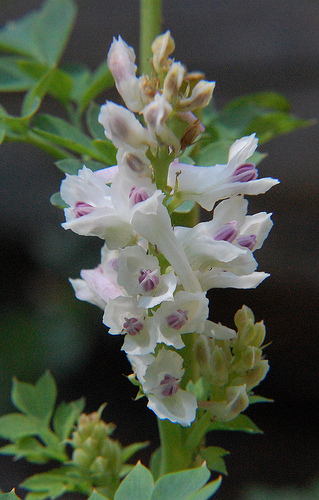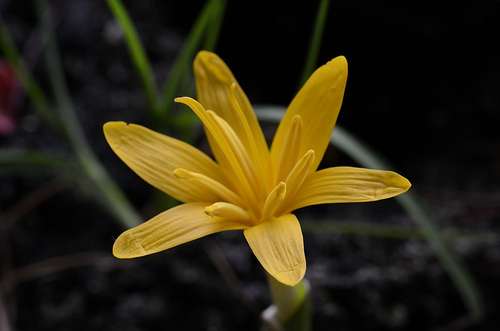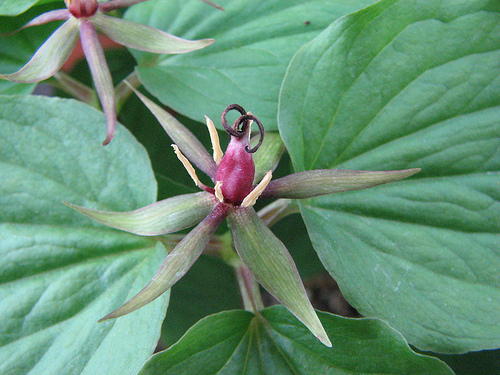RED ALERT: The practice of using local herbs as medicinal remedies for a variety of health conditions is widely known in India. It is a knowledge that has been acknowledged by the world as India’s Ayurvedic medicine tradition. Even as modern drugs gain popularity, the tradition of using herbs to cure a headache, a cough, or a serious ailment like cancer still exists. But researchers from the flora-rich valley of Kashmir find how threats like tourism, overharvesting, even smuggling of herbs has led to the decrease in local medicinal plants in the last few years. Now these life-saving plants, need a safety net themselves.
This is a guest post by study authors Dr. Aijaz Hassan Ganie and Mr. Bilal A Tali, research fellows in Department of Botany, University of Kashmir. The present study was under Special Assistance Programme (SAP), Department of Botany, University of Kashmir.
Kashmir Himalaya harbours diverse habitats which support a rich floristic wealth that has been used as a resource-base by its people since times immemorial. Indeed Kashmir is known for its economically valued plants and their products, such as medicine, food, fodder, fibre etc. Owing to the rich and unique floristic diversity, a good proportion of plants are used as medicine in one or other form. The ethnic use of some of these herbs in medicine through folklore as well as in the documented form dates back to 3000-1000 BC and was in all probability the only means of curing and/or protecting the human population from various diseases. The therapeutic properties of these herbs is reflected from the view that most of these possess the bioactive principles, anti-cancer as well as anti-ageing (anti-oxidant) properties apart from antipyretic, asthmatic, diuretic and other properties.
Our present study revealed that about 650 plant species are being used as medicine in one or other form in Kashmir Himalaya. However, over the decades, a large number of these species have been rendered threatened due to various anthropogenic as well as natural threats.
Up to the year 2012, our research team have recorded 11 different types of threats operative to medicinal plants in Kashmir Himalaya which include, over-grazing, grass cutting, landslides/soil erosion, constructional activities /unplanned development, floods/flash floods, over exploitation/overharvesting, cement factory dust, mining/stone quarrying, conversion of forests and grasslands into agricultural land/ land use changes, alien species invasion and huge tourist influx.
Overgrazing – Overgrazing is the predominant threat as the grazing animals damage the flowering spikes of the Medicinal Aromatic plant species (MAPs) and thereby restrict their population size and distribution; the best examples are species of the genus Inula, Fritillaria, Corydalis, Rheum, Saussurea etc.

Overharvesting – These medicinal plant species are also overharvested legally or illegally from the wild for local use, the examples are Rheum webbianum, Arnebia benthamii, Picrorhiza kurroa etc.
Unplanned development and Tourist inflow – The construction of roads and buildings along with the trampling by the locals and tourists have negatively impacted the populations of various MAPs. Cutting down of forests at an unprecedented rate have drastically decreased the population of MAPs due to their habitat destruction (e.g. Different Orchid species, Podophyllum hexandrum, Atropa acuminata, Skimmia anquetilia etc.). The deforestation not only causes habitat loss, but also it results in habitat fragmentation, diminishing patch size and core area, and isolation of suitable habitats.
The unplanned development which include: construction of roads and buildings poses threat to different MAPs (e.g. Arisaema jacquemontii, Lavatera kashmiriana, Taxus wallichiana, Hyoscyamus niger etc.).
Landslides/flash floods – Eruption of landslides in the natural habitats is another threat to the existence of these species. A major portion of the flora in Kashmir Himalaya is subjected to the threat of landslides (e.g. Ajuga bracteosa., Thymus spp., Tussilago farfara, etc.). The flash floods are operative threat to Digitalis and Caltha sp.
Exotic species – The invasion of exotic species particularly Anthemis cotula is threat to Cotula anthemoides. The land use change is another threat to MAPs, the species under this threat are: Inula racemosa, Colchicum luteum, Gagea gageoides etc.

In addition to 11 threats operative in Kashmir Himalaya the intensive field surveys carried out during the present study revealed that 2 more threats, namely smuggling/ illegal trade and unregulated research work, have more impact than the aforementioned threats, and these threats have brought some of the MAPs on the verge of extension in Kashmir Himalaya.
Illegal trade – From Kupwara to Banihal, Shopian to Marwaha Wadwan, people are extracting the medicinal plants for illegal trade. The species which were smuggled at an alarming rate include: Trillidium govanianum locally known as ‘Tripater’, Aconitum heterophyllun vernacular name ‘Patris/ Patis’, Fritillaria roylei commonly known as ‘Sheethkar’ and Picrorhiza kurrooa Kashmiri name ‘Koad’. The locals were observed extracting these plant species at the time of flowering and when asked why the herb was being dug at this stage they told us that they had been instructed by the contractor.
This practice not only removes the plant from its natural habitat, it also reduces the chances of the seed formation thus hampering increase in plant population.
It was also observed that a plant species Trillidium govanianum evaluated according to IUCN Regional Guidelines, as Least Concern (LC) in 2012, had due to recent indiscriminate extraction now become threatened.

Unregulated research – The present study also revealed that unregulated research work in different institutes of the state have also rendered some of these MAPs threatened, particularly phytochemical studies for which a lot of plant material is needed. The medicinal plant species, namely Gentiana kurroo, Aquilegia nivalis, Atropa acuminata, Aconitum heterophyllum etc. are under tremendous threat from such type of studies.
A regulatory mechanism is needed at the institutional level, particularly at the time of assigning research problem to the student, and it is also the duty of Departmental Research Committees (DRCs) to evaluate the synopsis and also see the pros and cones of the assigned research problem.
The shrinking populations of MAPs is a matter of great concern as these plants are backbone of our traditional medicinal system with a large population still depending on traditional medicine. In addition, extinction of these plant species may also lead to ecological imbalance.
More Related Stories,
Overharvesting Killing Life Saving Plants
One Man Making Desert Lands Greener
Shadow Puppetry Spreading Awareness about Medicinal Plants
The article has been re-published with permission from Greater Kashmir.
Image via cc/Flickr by Basharat Alam Shah, Paul , Walter Erhardt and John










An important article! I reposted this to my Facebook page.
Many thanks!
Sharon